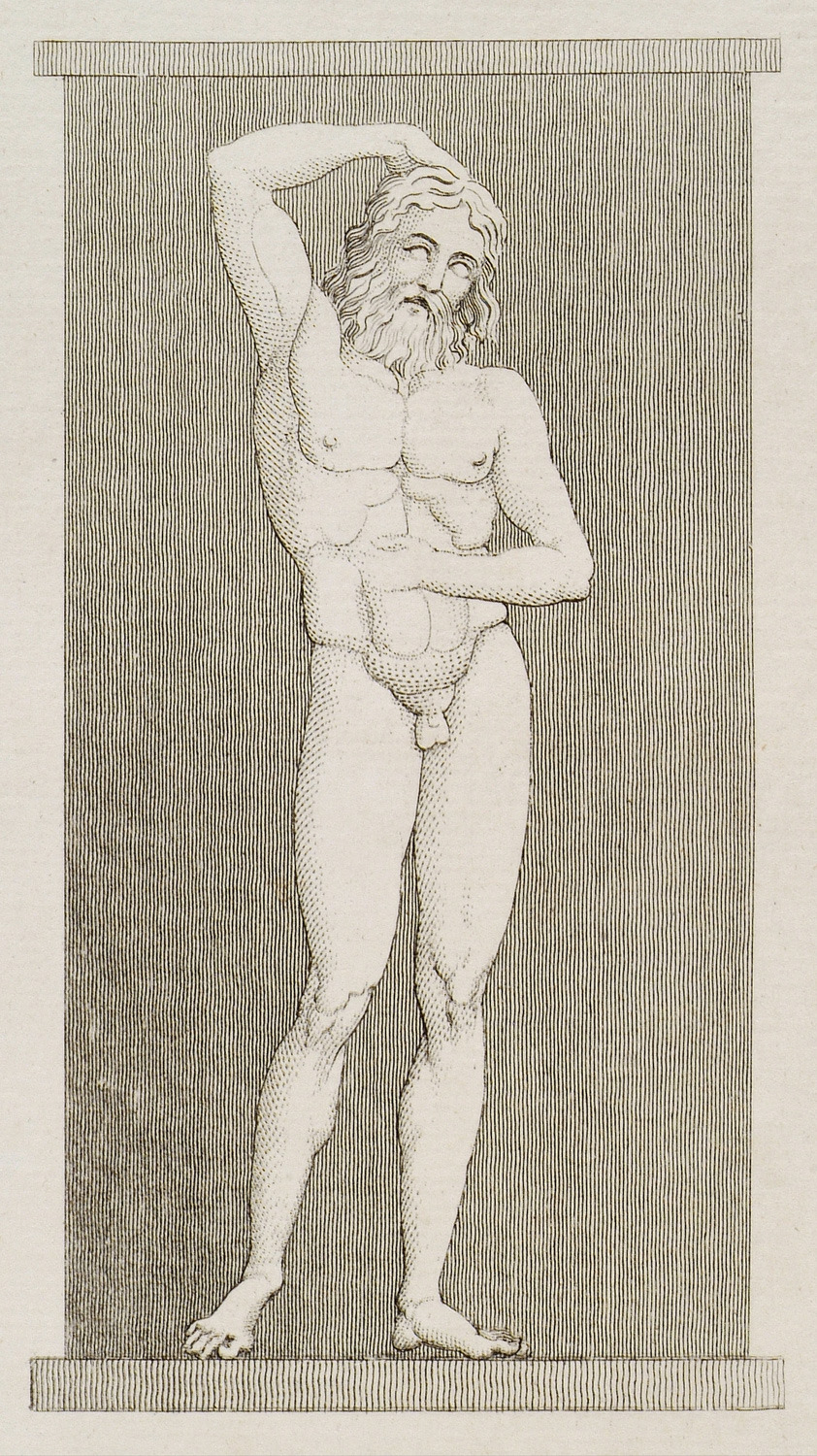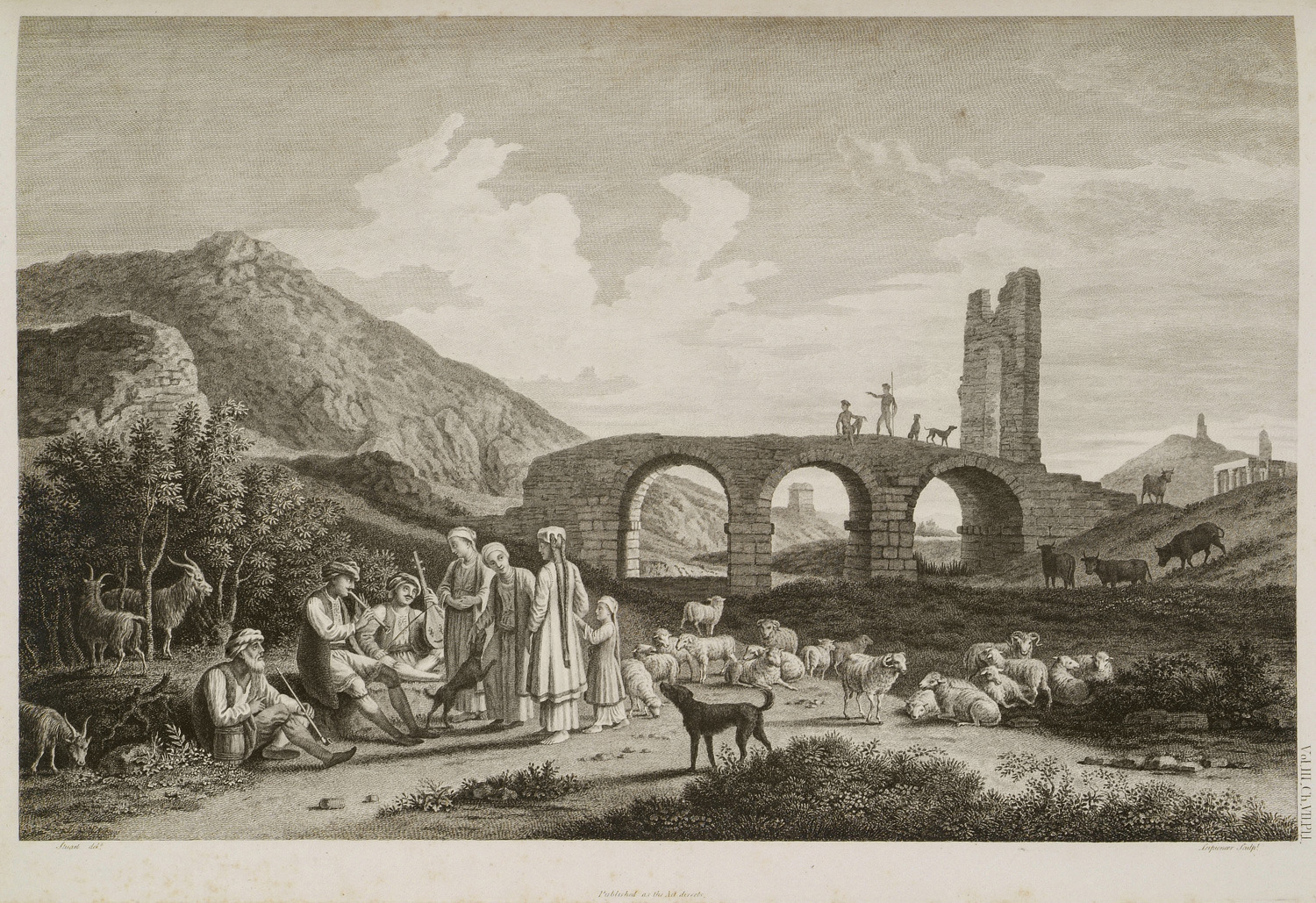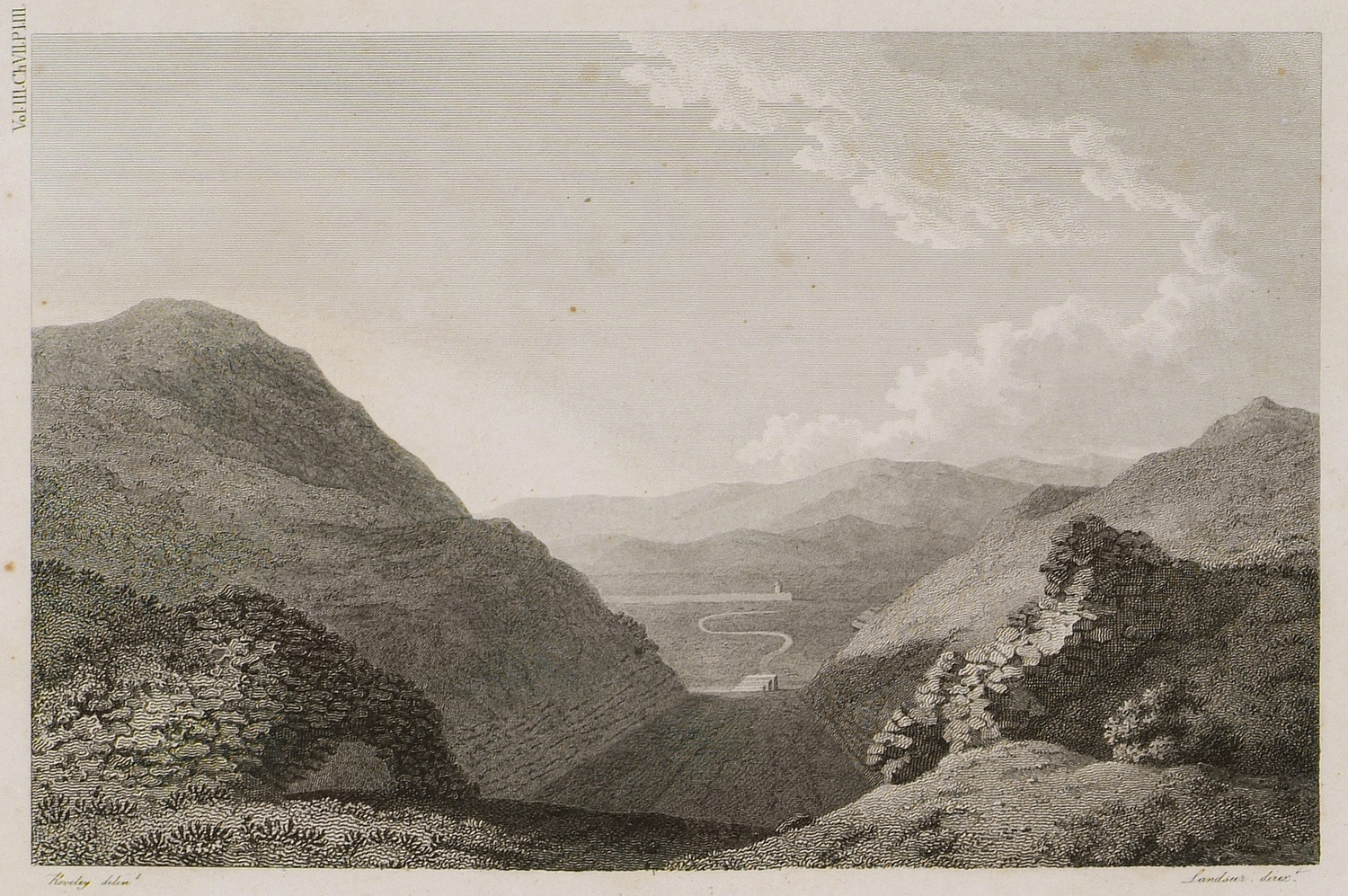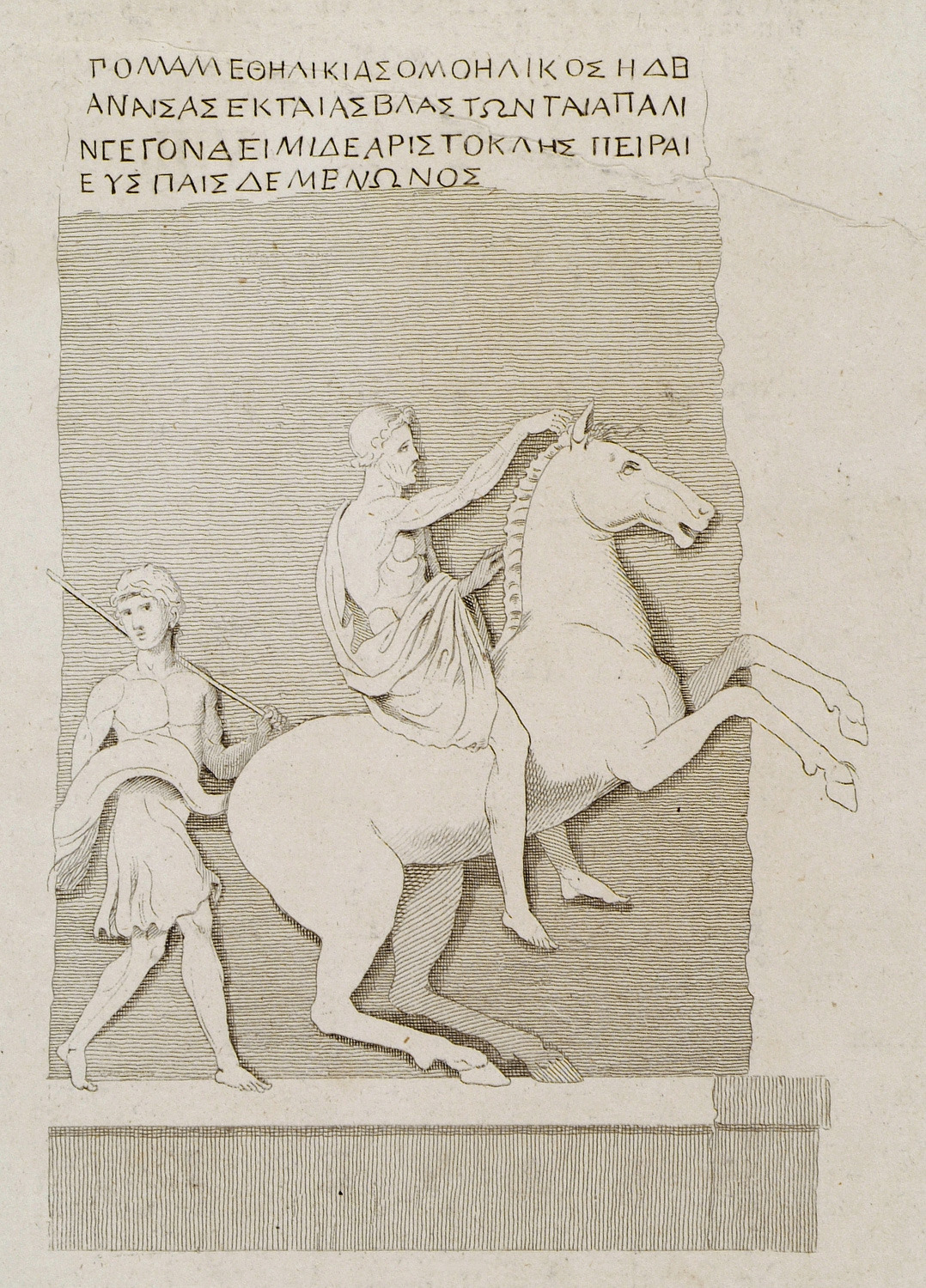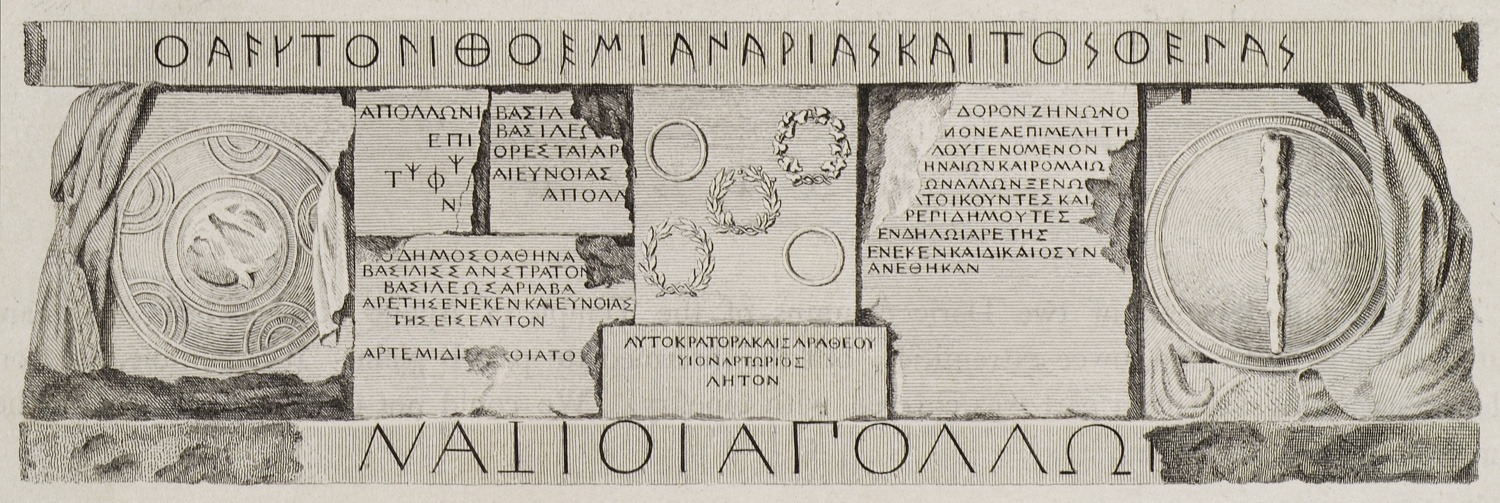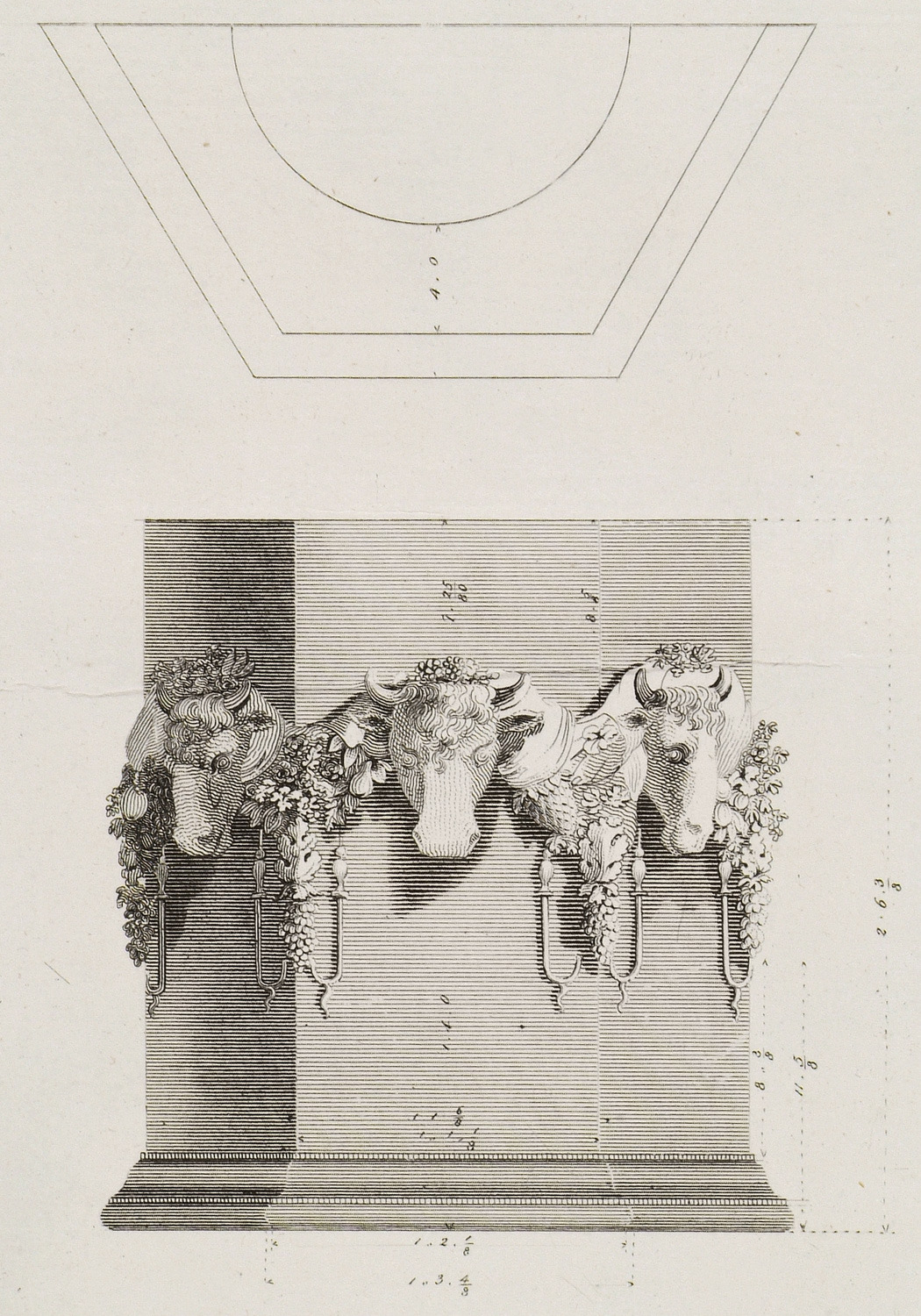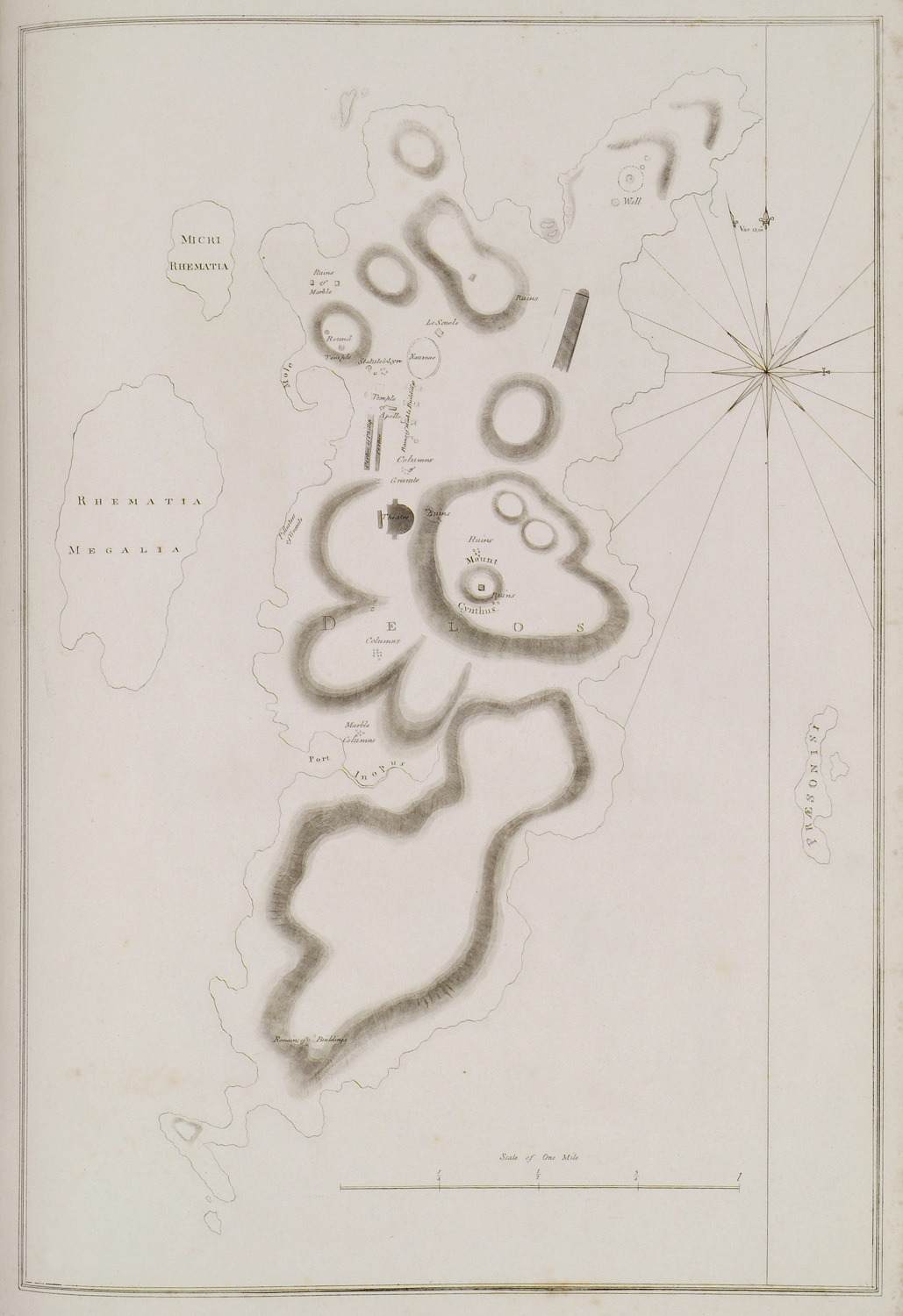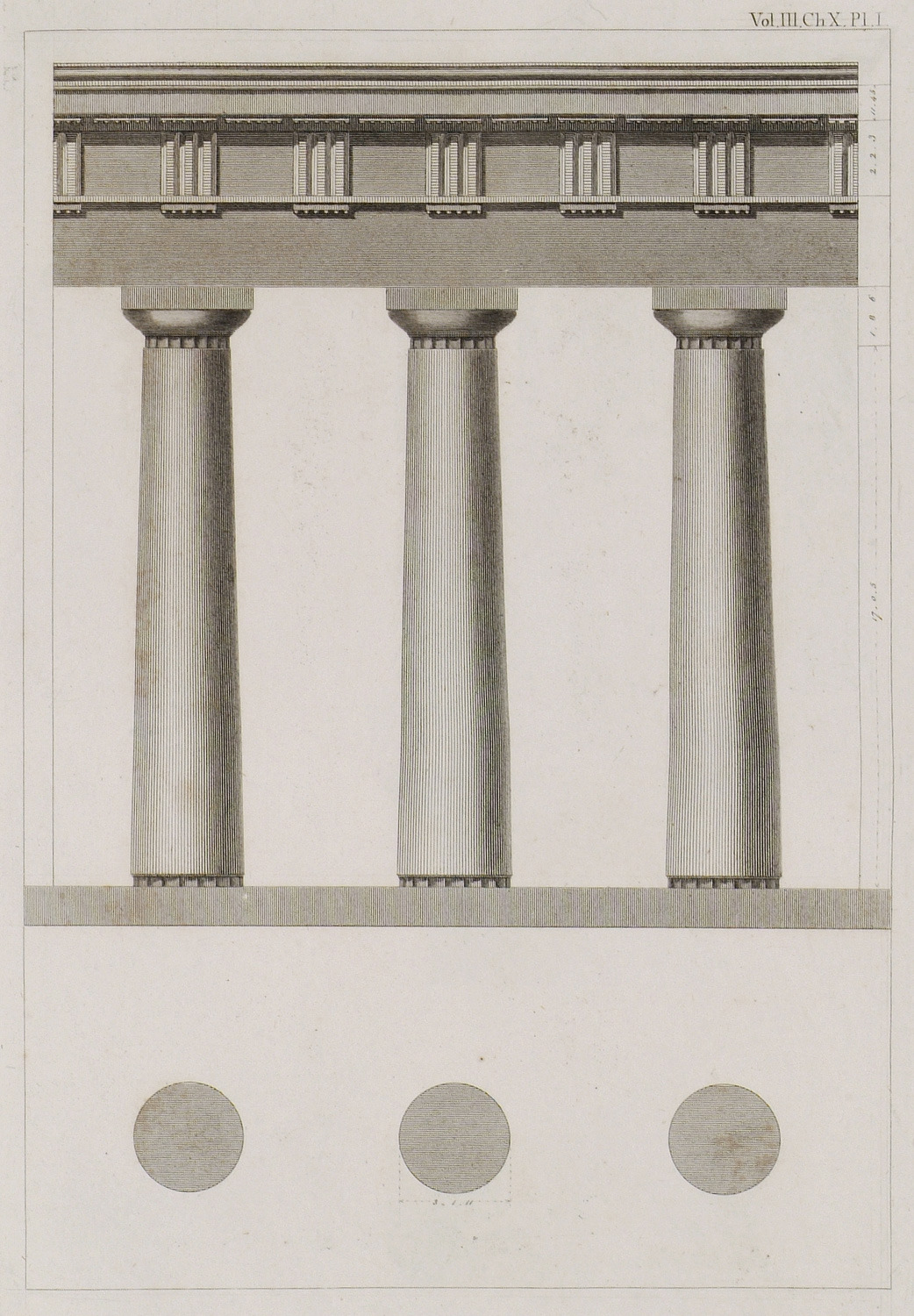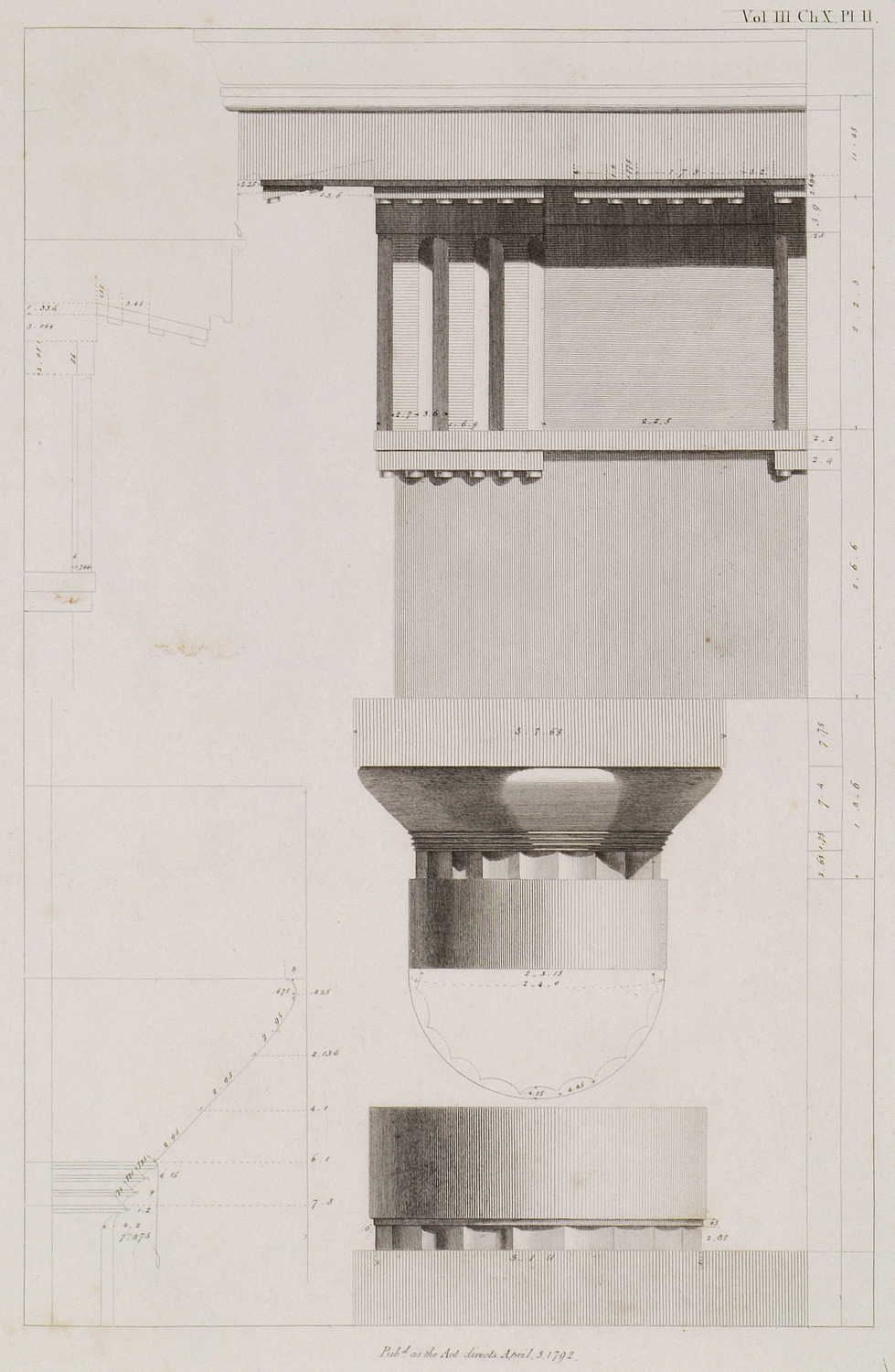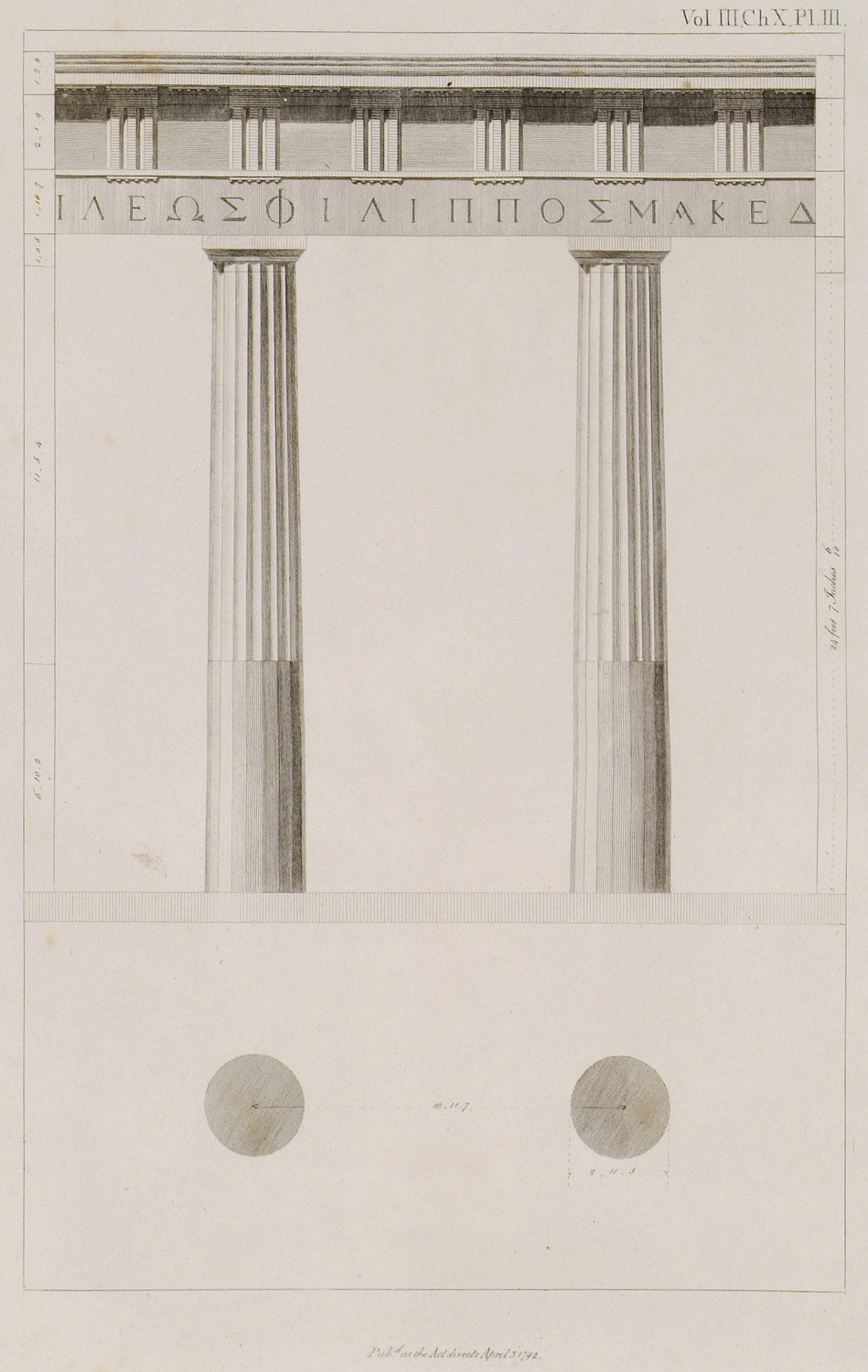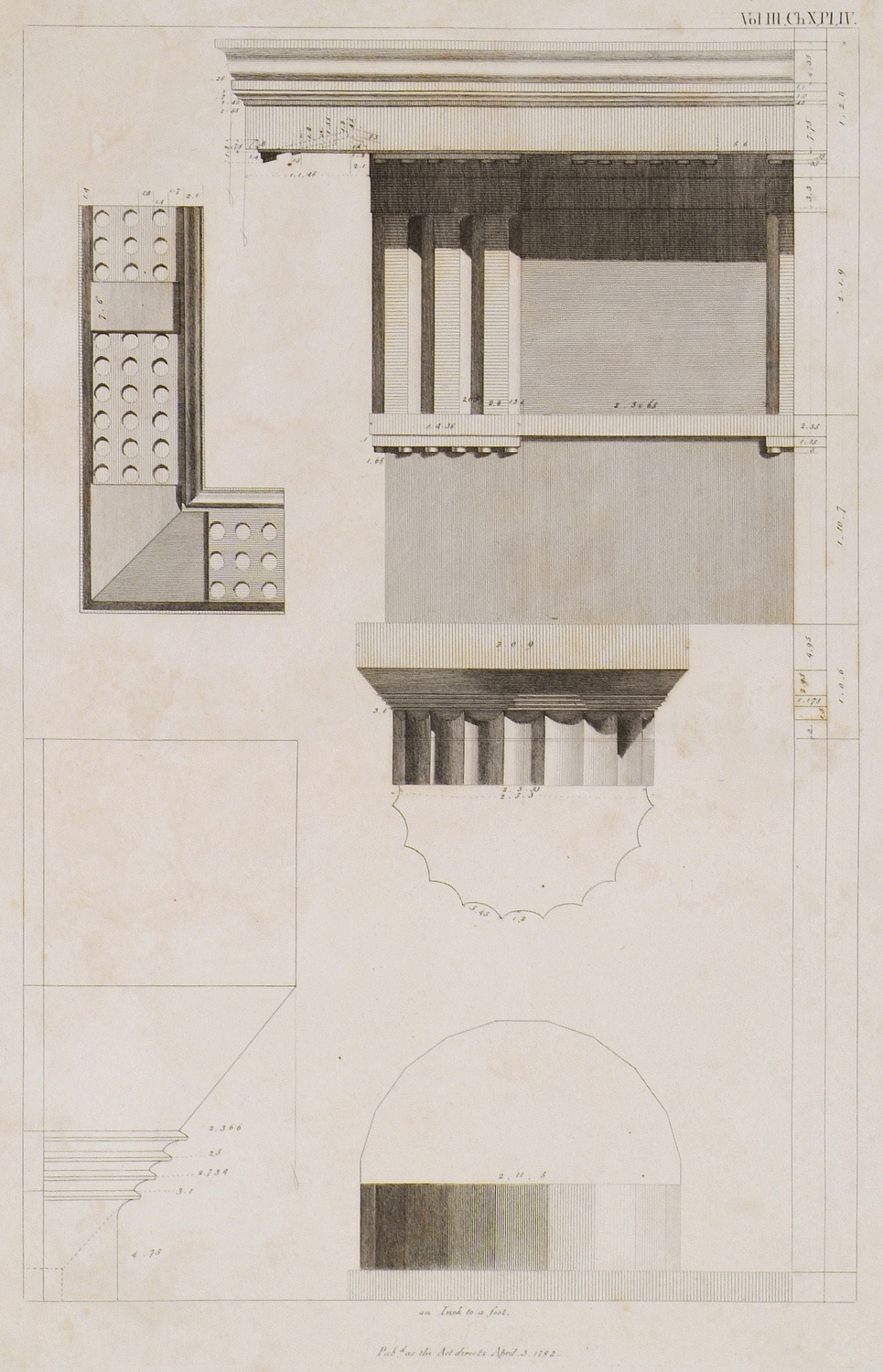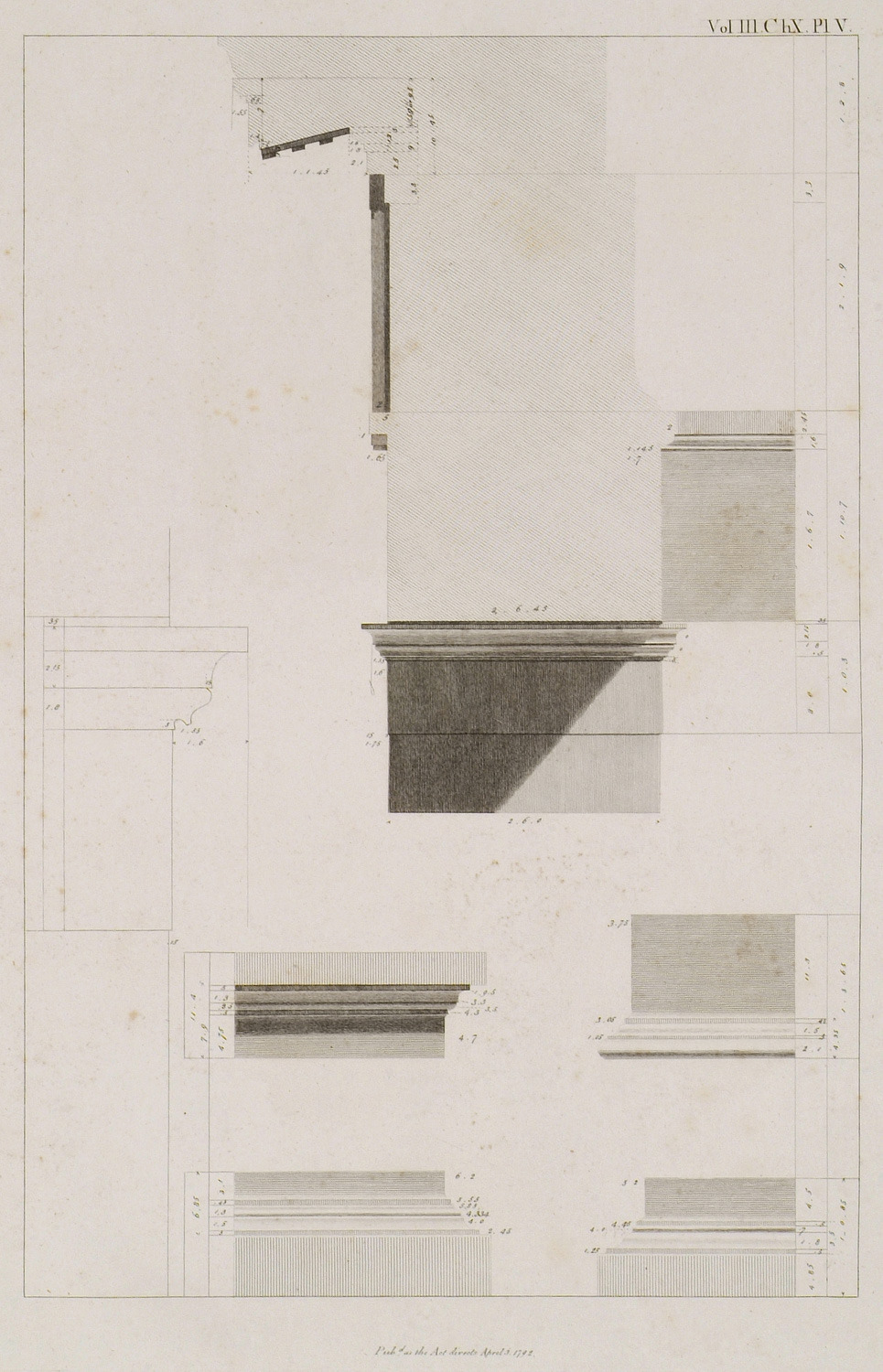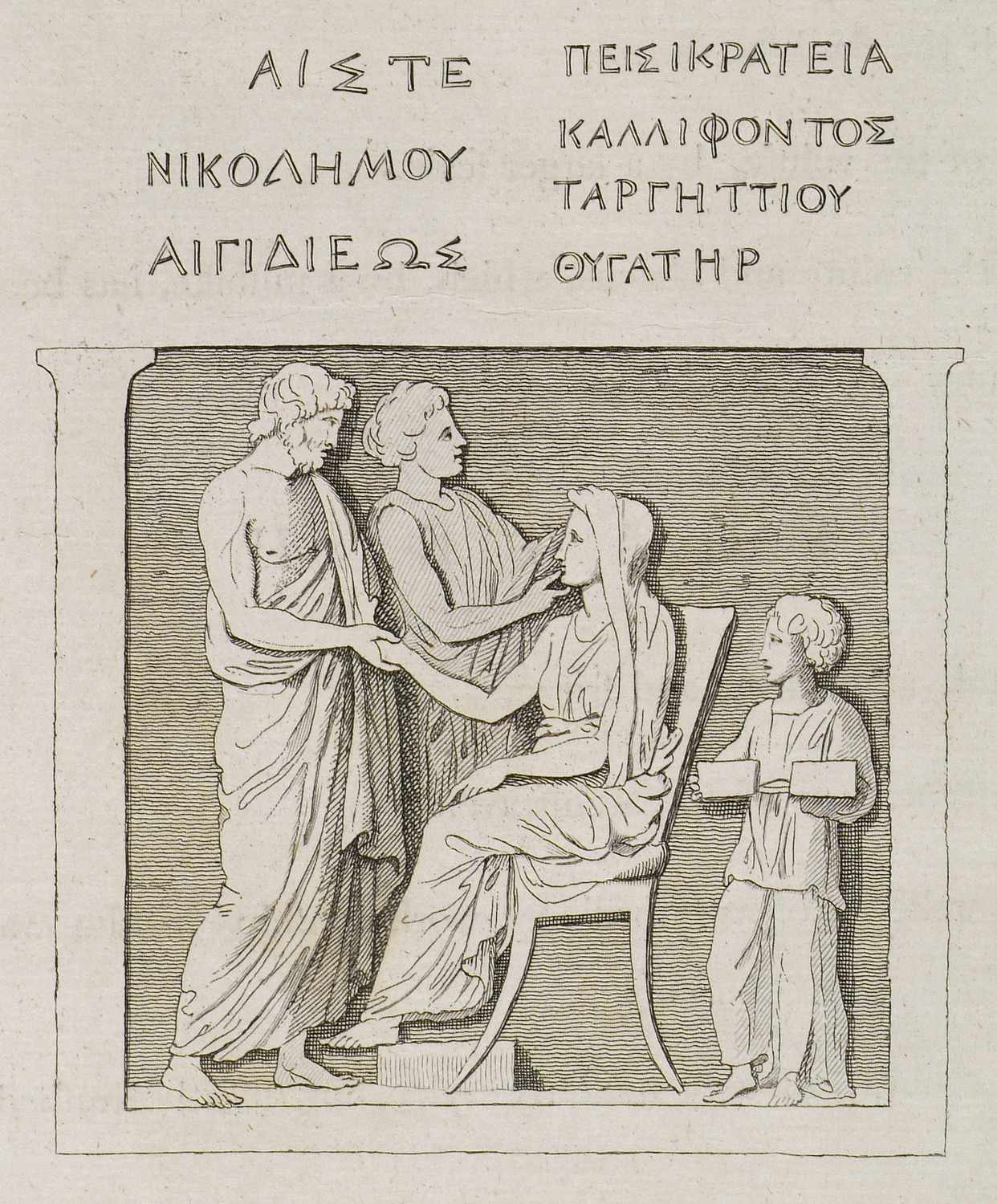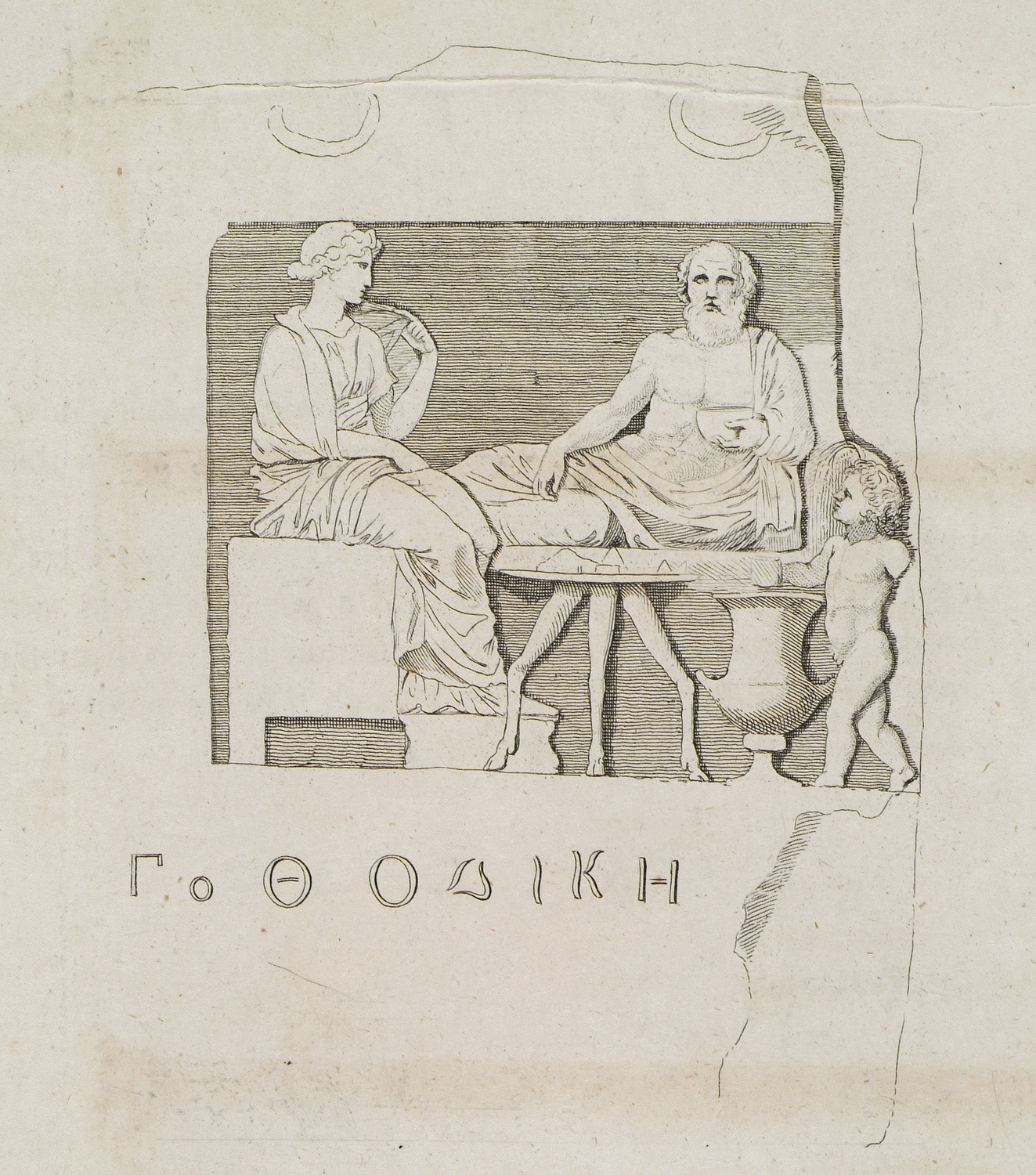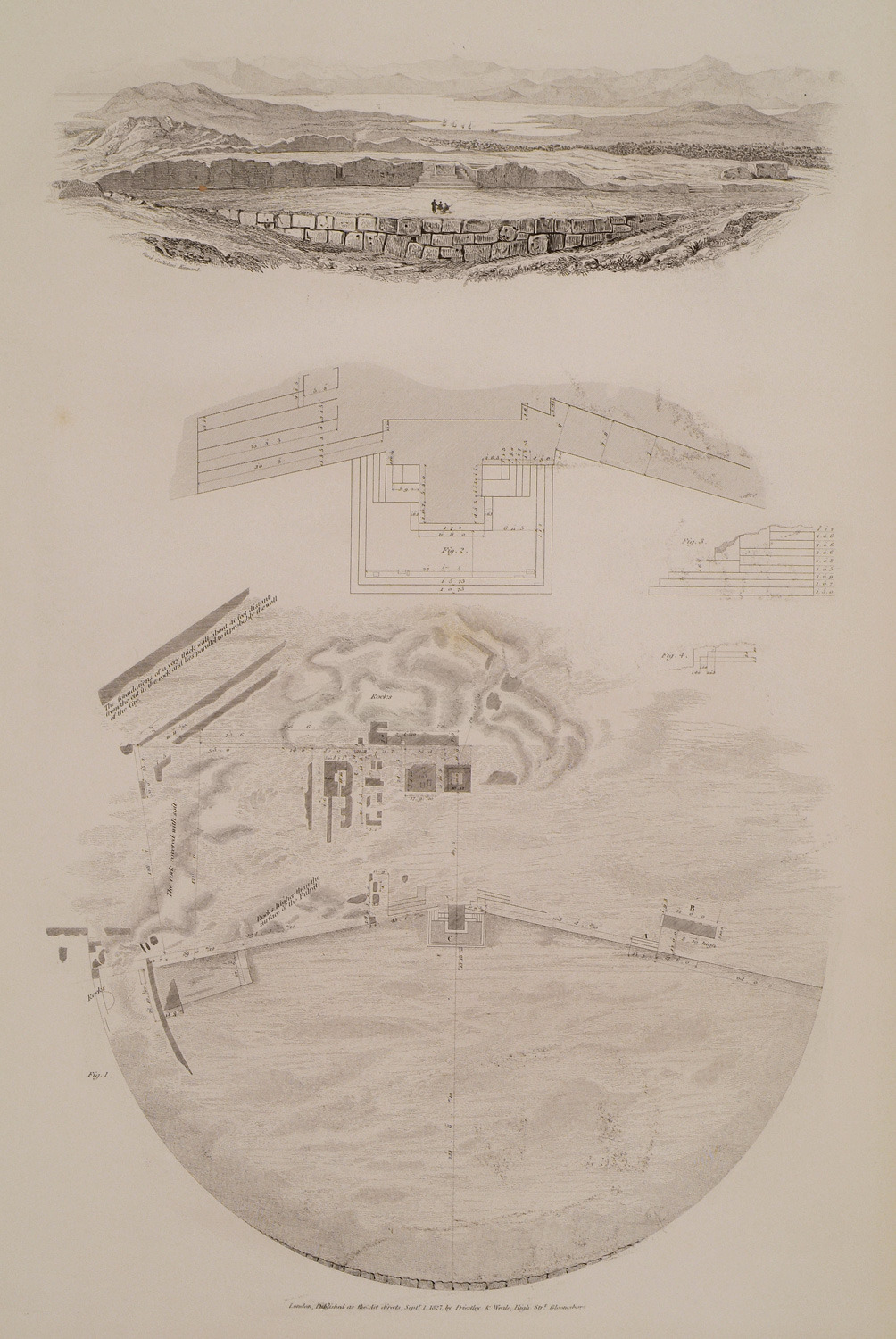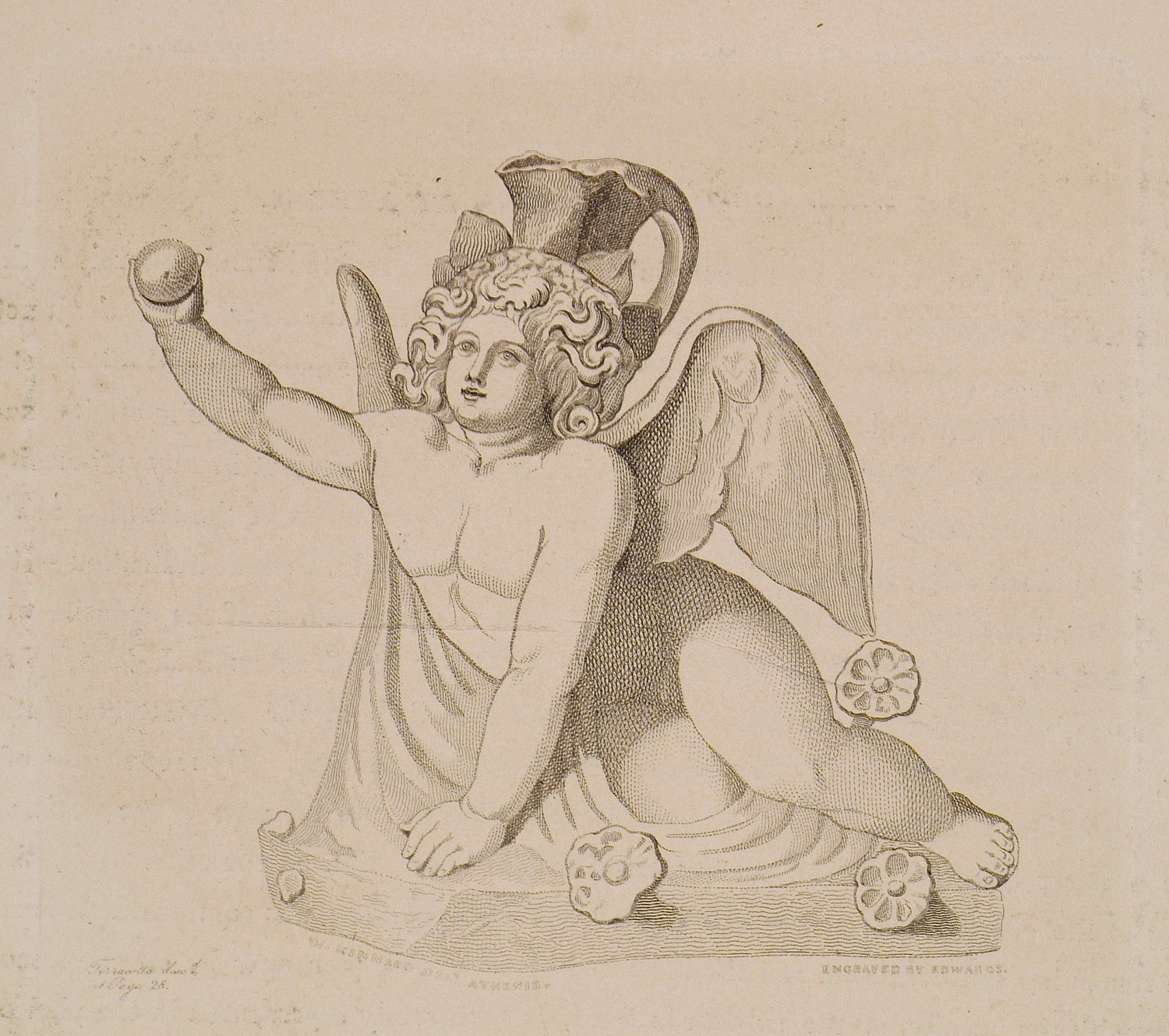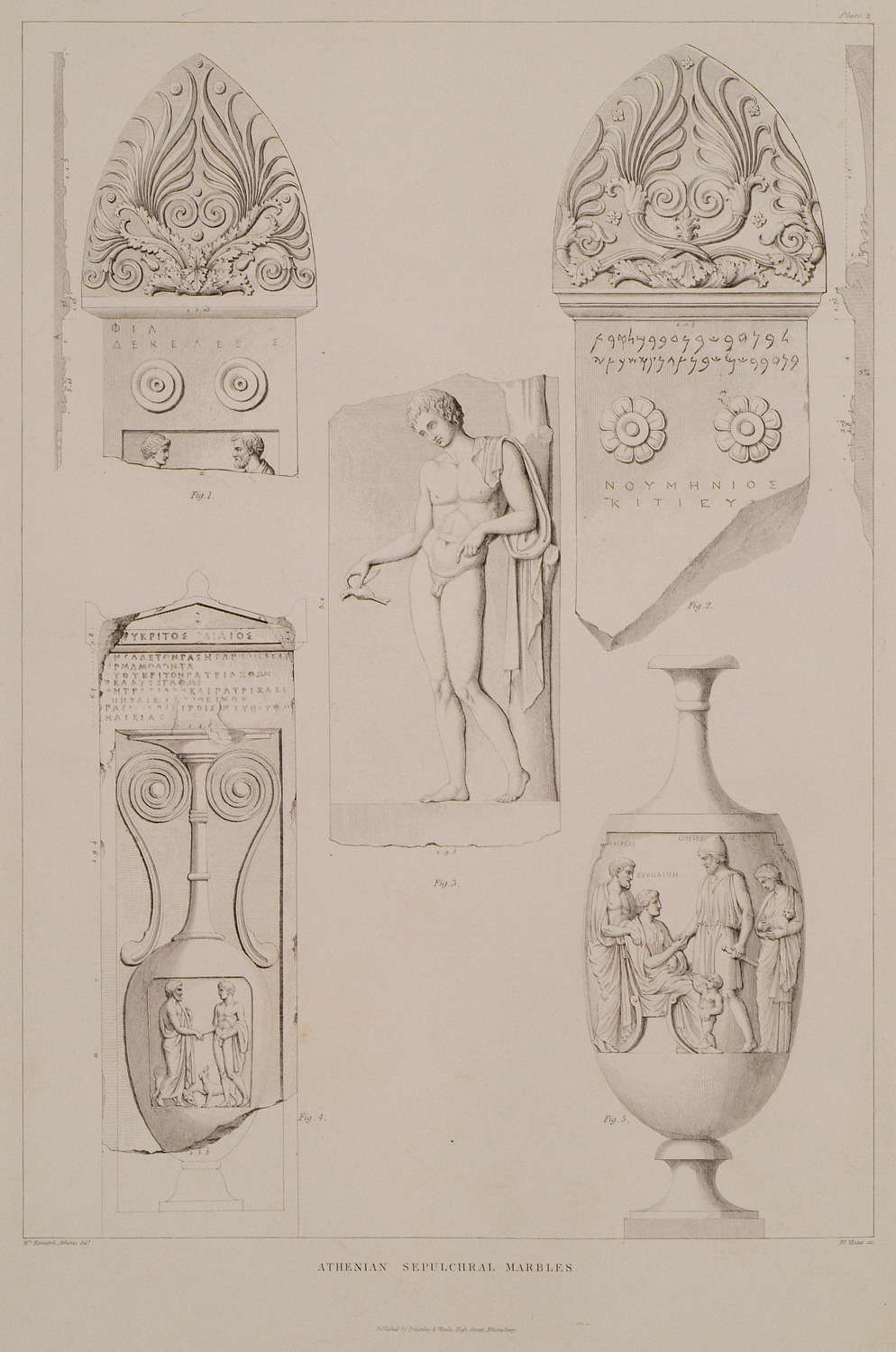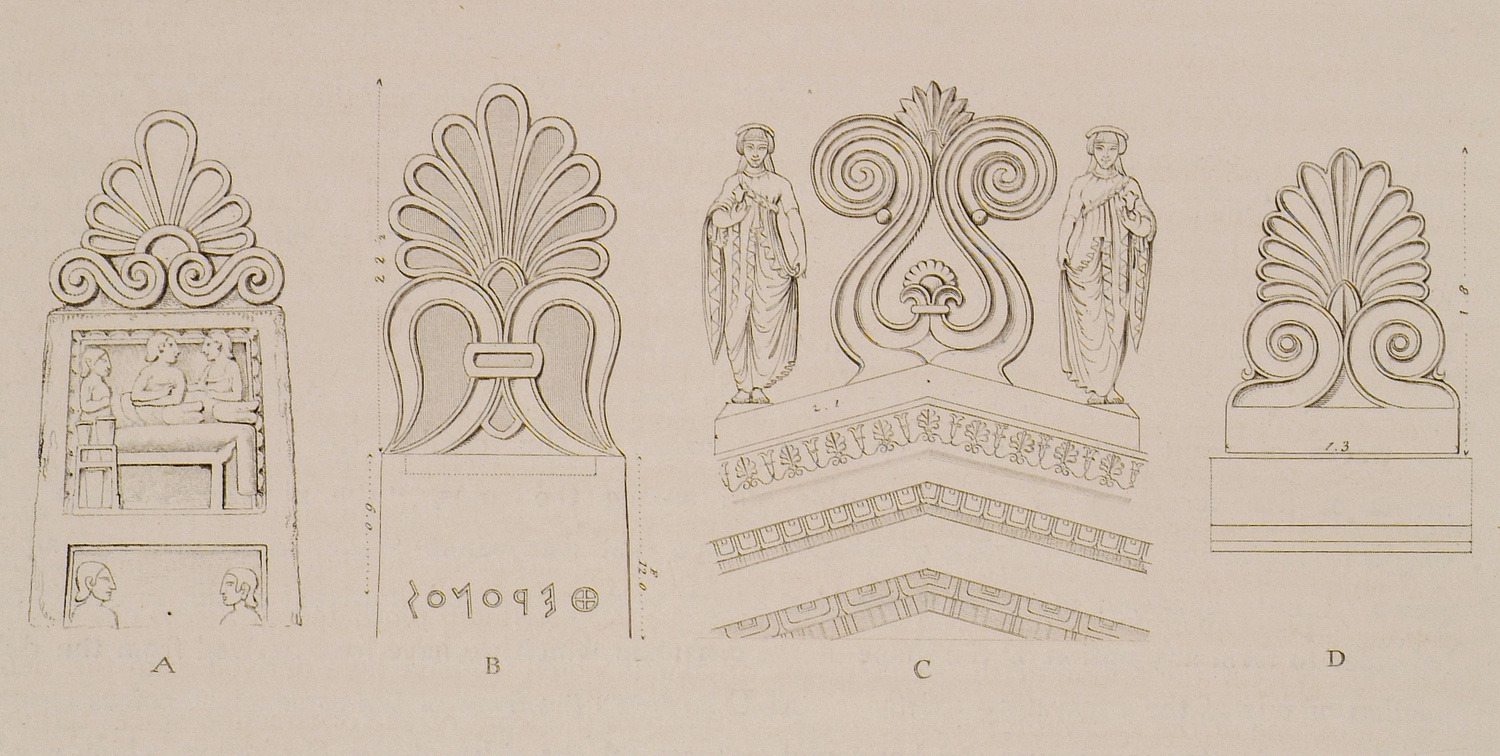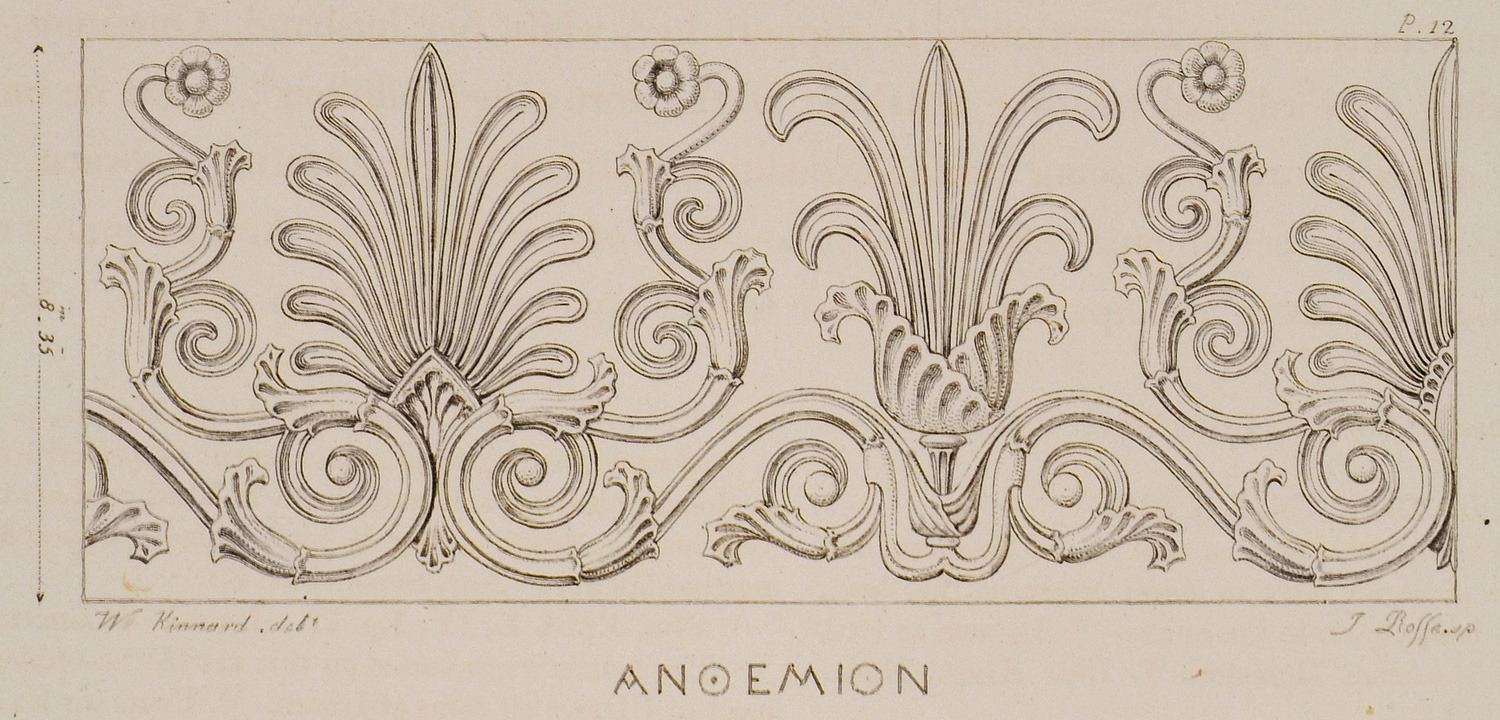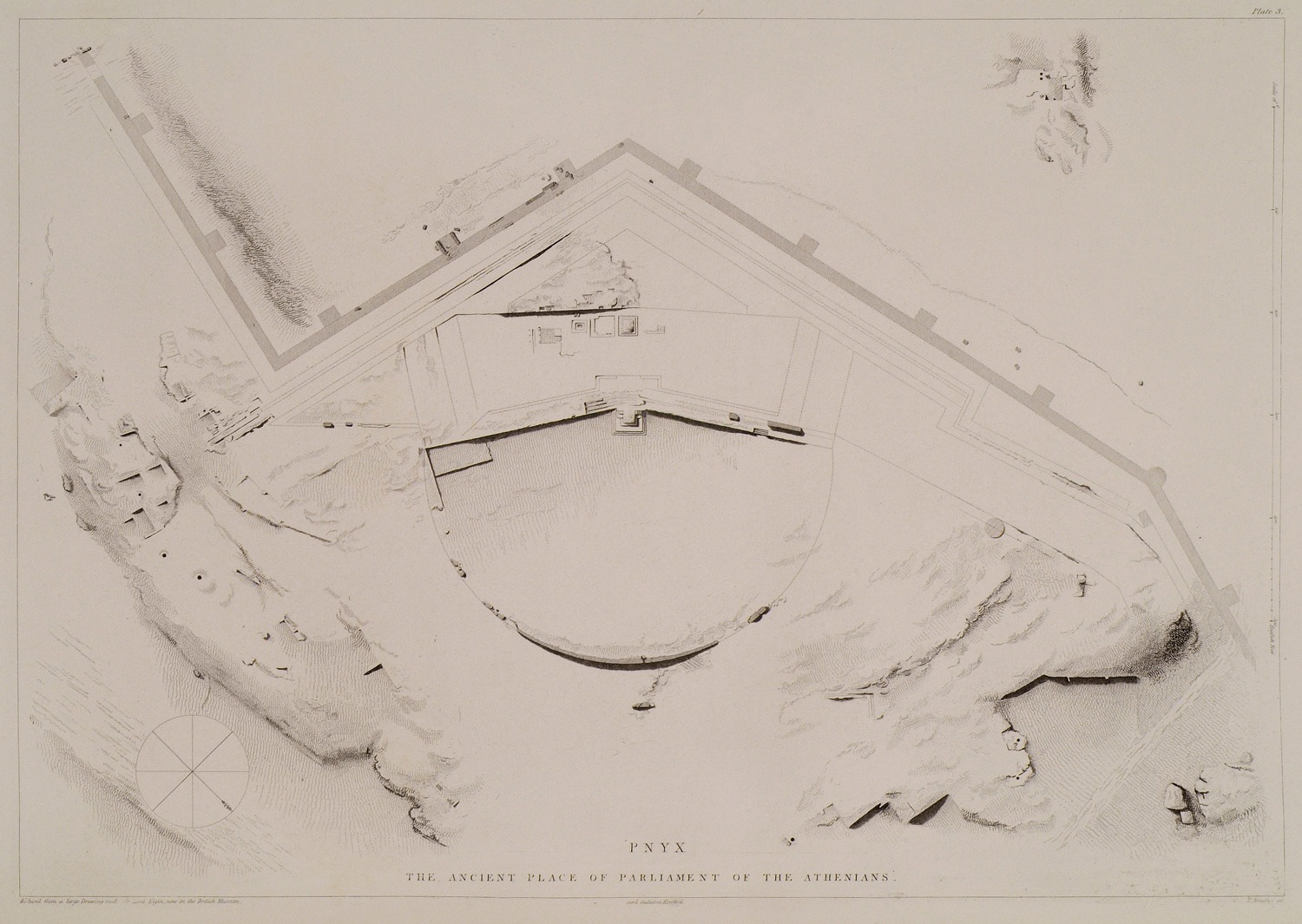Greece (7341 Subjects)
Fragment from church in Athens.
Relief showing an athlete, Athens.
View of Ilissus river and the partialy destroyed bridge which led to the Panathenaic Stadium. A group of shepherds with their flock prepare to spend the night at the site.
Plan of the Roman bridge over Ilissus, with the elevation of it next to the south west.
View of the Stadium Panathenaicum, taken as standing upon the elevated part of the circular end, which is next to the south, and looking down upon it.
Pnyx: Fig. 1.The plan of the remains on the rock [...]. Fig. 2: Plan of the bema, the public speaking platform . Fig. 3. Profile of the bema.
Coins from Macedonia.
Relief from Megali Panagia church, Thessaloniki.
View of the sculptures of the now lost Incantadas monument at the southern entrance of the Roman Agora of Thessaloniki. The sculptures were incorporated in the house of a family of Sephardi Jewish merchants. British consul Paradise, who has come to show John Stuart and Nicholas Revett the monument, meets the owner of the house. A young servant offers the consul a cup of coffee while from above the owner's wife reprimands her husband for not having invited the consul to sit before offering him coffee. On the left, a woman who is spinning approaches the travellers. On the right, Stuart and Revett with the young son of the British consul, who is escorted by the consul's dragoman (interpreter).
Inscriptions and shield reliefs from trophies, found near Stoa of Philip V, Delos.
Ancient altar from Myconos.
Map of Delos and the islands nearby.
Plan of Doric columns and elevation of Doric colonnade together with entablature, possibly from the Temple of Apollo, Delos.
Temple of Apollo, Delos: Shaft, capital, and entablature of the columns.
Stoa of Philip V, Delos: Plan and elevation of the portico.
Stoa of Philip V, Delos: The shaft, capital, and entablature of the columns. The inscription is given by Tournefort, who visited Delos in the year 1700.
Stoa of Philip V, Delos: Elevations and section plans of the entablature and other architectural features.
Votive relief found on the wall of a school close to the church of Megali Panagia, Athens.
Relief found at a church at Marousi, Athens.
Roman colonnade close to the Choregic monument of Lysicrates: Fig. 1: Elevation of the columns. Fig.2: Plan of ditto. Fig.3: Plan of the capital. Fig. 4: Flank of the capital. Fig. 5: Section through the front of ditto. Fig. 6: Section through the flank of ditto. Fig.7: The spiral line of the volute, by a larger scale. Fig. 8: The section of the volute and abacus, which, by a mistake, has been put upside down. Fig. 9: Eye of the volute.
Roman colonnade close to the Choregic monument of Lysicrates: Fig. 1: The base, capital, architrave and frieze. Fig. 2: Profile of the internal face of the architrave.
Ruins of ancient building embedded into a residence, next to the Horologion of Andronikos Kyrristos (Tower of the Winds), Athens: Fig. 1: Elevation of the part remaining, which shews that there were not fewer than three arches. Fig. 2: Plan of ditto. Fig. 3: Capitals of the pilasters with the profile of the archivolt; the spandrel, which is a rose, projects equal to the upper facia of the archivolt, as shewn upon the right hand side, where the profile of the archivolt is given; but the projection of the central filet is shewn on the left from the flat surface of the spandrel. Fig. 4: Is the profile of the impost mouldings. Fig. 5: Section through the entablature, which is probably incomplete.Fig. 6: Spandrel with the rose. Fig. 7: Profile in the center between the two capitals of the pilasters, shewing the manner in which the mouldings finish against the background.
View of the Pnyx. Plan and section plan of the bema, the orator's podium. Plan of the site of the Pnyx.
The Propylaea from the west. The Ottoman commander of the city garrison (Disdar aga), with a dervish. On the right, a Greek who is held prisoner.
Ancient vase from Athenian tomb.
Fig. 1-4: Funerary steles from Athens. Fig. 5. Funerary lekythos.
Α. Etruscan palmette. Β. Ancient Athenian palmette. C. Acroterion from temple on Aegina. D. Palmette from the Parthenon.
Relief with palmettes and lotus at the annulets of the Ionian capitals of Erechtheion, at the Acropolis of Athens.
Pnyx. The ancient place of Parliament of the Athenians.
View of Pnyx Hill from Piraeus.



